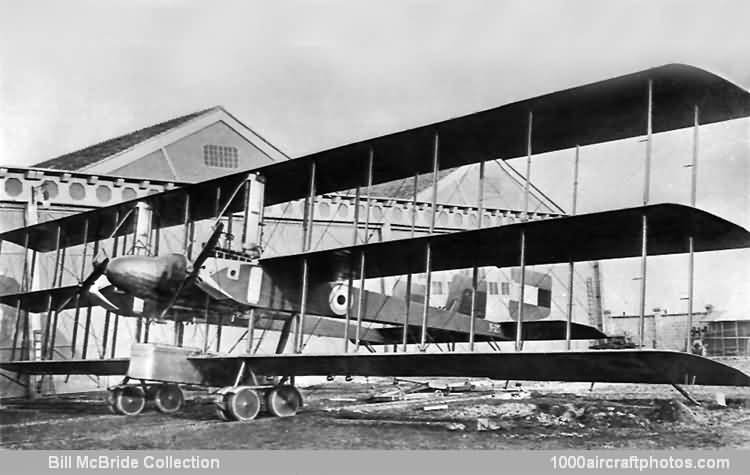07/31/2012. Remarks by Johan Visschedijk: "For a very long time the belief persisted in many quarters that Britain and Germany, with their Handley Pages and Gothas, were the first to make widespread use of the aeroplane for heavy bombing. In fact, both Italy and Russia had evolved aircraft suitable for this type of operation well before the outbreak of WW I, and Italian Ca.2s had made several long-range bombing raids on Austro-Hungarian targets well before the Handley Page O/100 had even flown.
Almost all the early Caproni types were tri-motors, and the military designation Ca.4 was applied to a series of very large triplanes, the first of which was the Ca.40 of late 1917. Side-by-side seating for the two pilots was installed, and the front gunner's cockpit was retained; but in place of the rear gunner's cage separate positions were installed in each of the fuselage booms. The Ca.40 was powered by three 200 hp Isotta-Fraschinis, but their combined output was insufficient for an aeroplane of this size. Because of this and other shortcomings only three Ca.40s were built.
They were followed in 1918 by twelve examples of the Ca.41 with 270 hp Isotta-Fraschinis and an oval-section nacelle with tandem pilot seating similar to that of the Ca.35. These aircraft served with Italian Army and Navy squadrons. The final production triplane variant was the Ca.42; twenty-three were completed, six of them being supplied to the Royal Naval Air Service (RNAS) in 1918.
The Ca.42s were powered by Fiat, Isotta-Fraschini or Liberty engines of greater power, and the pilots' seats were situated side-by-side. A coffin-shaped container was suspended between the main landing gear wheels that could hold 3,197 lb (1,450 kg) of bombs. The Ca.42 proved to be too slow for daylight bombing and was employed principally on night operations. The RNAS Ca.42s apparently were not used for combat purposes and were returned to Italy after the war."
